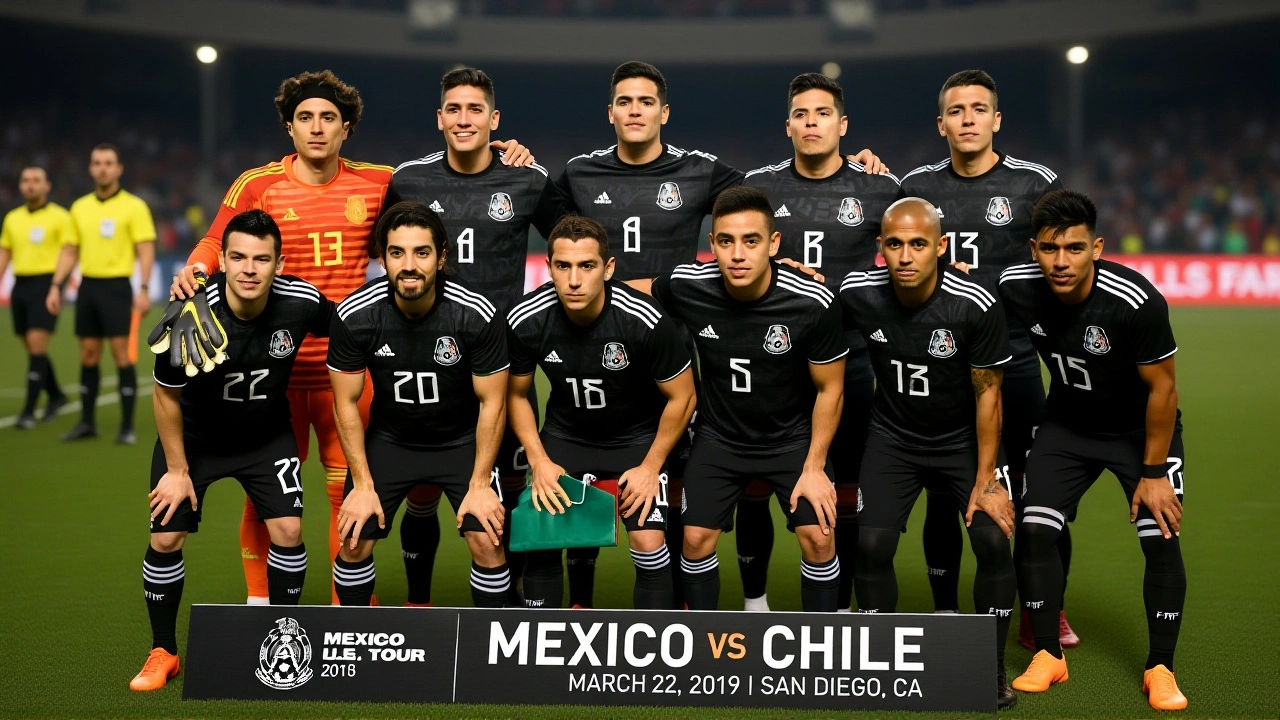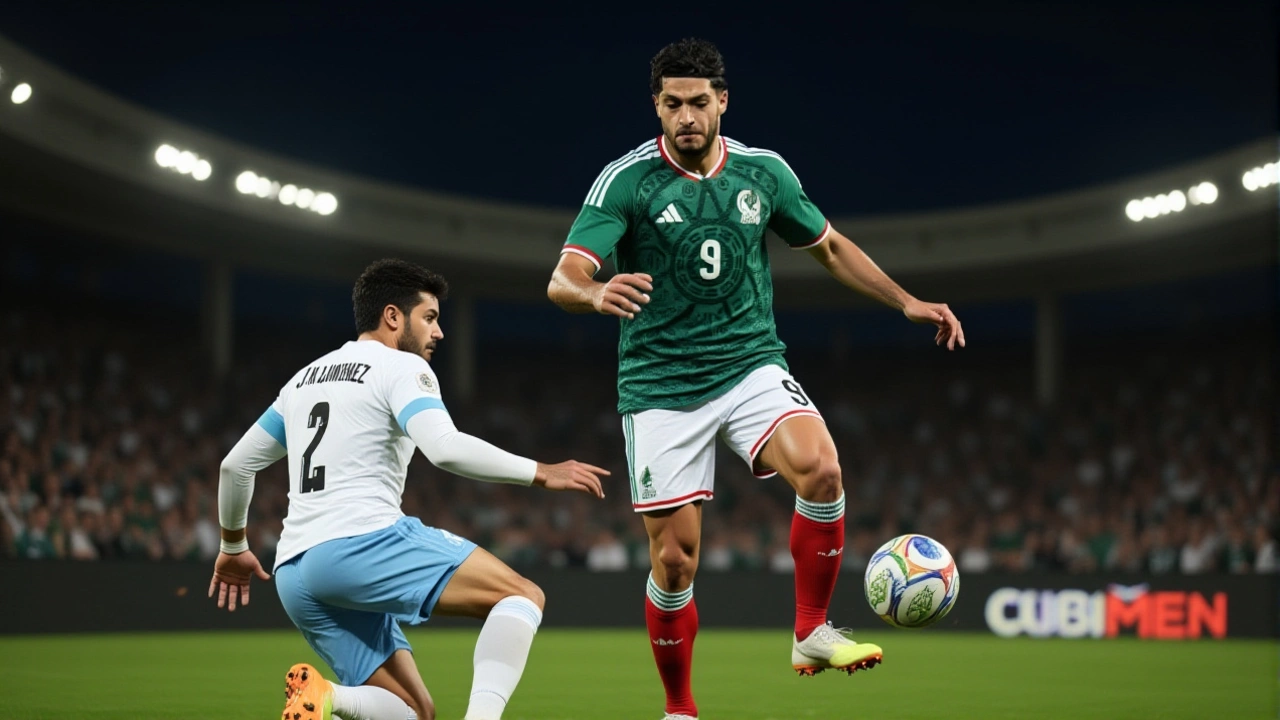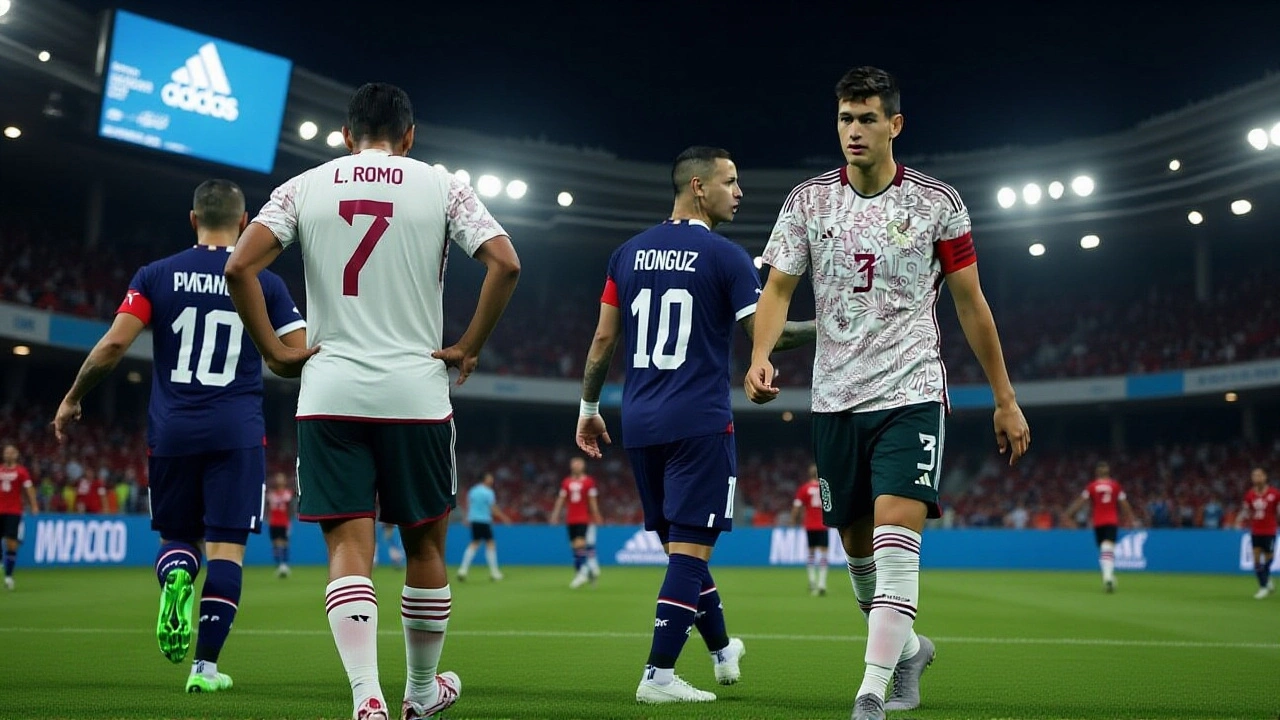When Raúl Jiménez buried his penalty kick at the 54th minute, the Alamodome erupted. For a fleeting moment, it looked like Mexico had clawed back from the brink. But just two minutes later, Damián Bobadilla struck again — and the dream collapsed. Mexico lost 2-1 to Paraguay on Tuesday, November 18, 2025, in front of a sparse but vocal crowd in San Antonio, Texas. It wasn’t just a friendly loss. It was the final nail in a coffin that’s been building all year.
A Pattern, Not a Fluke
This wasn’t an outlier. According to FMF State of Mind, this defeat marked Mexico’s third consecutive international loss — all in 2025. The Federación Mexicana de Fútbol had hoped to end the year on a high, especially after a promising start to the campaign. Instead, the team finished with just eight goals across all matches — the lowest output since 2017. And here’s the kicker: they led at halftime in two of those three losses. That’s not bad luck. That’s a mental breakdown.Marvin Pfeiffer of the San Antonio Express-News captured the mood perfectly: "Mexico continues international slump with loss to Paraguay in San Antonio." The words didn’t feel like journalism. They felt like an obituary for a team that’s lost its rhythm.
The Match That Broke the Back
Paraguay didn’t dominate. They didn’t need to. Antonio Sanabria opened the scoring just three minutes into the second half — a clinical finish after a lazy back-pass from Johan Orozco. Mexico’s defense, already under scrutiny, looked confused. No one tracked back. No one shouted. Just silence.Then came the penalty. Diego Pineda darted into space, went down under a light challenge from Bobadilla, and the referee pointed to the spot. Fox Deportes’ broadcast called it: "PENALTY FOR MEXICO! Raúl Jiménez doesn’t fail." And he didn’t. A perfect, emphatic strike — low, hard, corner. 1-1. For a moment, hope flickered.
Then, 56th minute. A long ball over the top. Bobadilla outmuscled Sebastián Álvarez, turned, and fired. Goal. The Alamodome went quiet. Even the Mexican fans stopped chanting. The game was over. Not because of brilliance — but because of exhaustion. Mental fatigue. Tactical drift.

Who’s to Blame?
Goalkeeper Alfredo Malagón was one of the few bright spots. He made three outstanding stops — including a fingertip save on a curling free kick from José Luis Palacios in the 67th minute. But you can’t win with one hero. You need a team.Midfielder Uriel Mora looked lost. He completed just 68% of his passes — the lowest among starters. Carlos Ruiz and Eduardo Lira offered little in the way of creativity. And the attack? Beyond Jiménez, nobody threatened. Not once in 90 minutes did a Mexican player take a shot on target outside the penalty area.
"They had the ball. They had chances. But they didn’t have belief," said one longtime Mexican analyst, speaking off-record. "It’s not about tactics anymore. It’s about identity. Who are they? What do they want to be?"
What’s Next?
The Federación Mexicana de Fútbol now faces a crossroads. Their next competitive fixtures — CONCACAF Nations League matches in March 2026 — are less than four months away. And the pressure is mounting. Fans are angry. Media are relentless. And the players? They’re tired.There’s talk of a coaching shake-up. Some are calling for Jaime Lozano to be replaced. Others say the problem isn’t the coach — it’s the system. The youth pipeline is strong, but the transition from U-23 to senior team is broken. Too many players are thrown into the deep end without preparation.
And then there’s the issue of scheduling. Playing a friendly in San Antonio — a city with a massive Mexican diaspora — should’ve been a morale booster. Instead, it became a mirror. A reflection of a team that’s lost its way.

History Doesn’t Repeat — It Rhymes
This isn’t the first time Mexico’s had a slump. In 2014, after a shock loss to Cameroon in the World Cup, they lost three straight friendlies before rebounding under Miguel Herrera. In 2018, after a group-stage exit, they lost to Argentina and Brazil in friendlies — then came back to win the 2019 CONCACAF Gold Cup.But this time feels different. The team isn’t just underperforming. It’s disconnected. The players look unsure. The fans feel ignored. And the federation? They’re still playing the same game — hoping for magic instead of building structure.
There’s a saying in Mexican football: "El Tri doesn’t lose. It just forgets how to win." Right now, it’s forgetting everything.
Frequently Asked Questions
Why did Mexico’s second-half performance collapse again?
Mexico has now lost three consecutive matches after leading at halftime — a pattern that points to mental fatigue and tactical rigidity. In this match, they failed to adjust after Paraguay’s early second-half goal. The team’s energy dropped, substitutions came too late, and no one stepped up to impose their will. FMF State of Mind noted this is the third time in 2025 they’ve faded after 45 minutes — suggesting a systemic issue, not just bad luck.
How does this affect Mexico’s World Cup qualifying chances?
While this was a friendly, the performance raises serious red flags for the upcoming CONCACAF qualifying campaign starting in March 2026. Mexico currently sits in second place in the standings, but their lack of attacking threat — just eight goals in 2025 — makes them vulnerable. Teams like Canada and the U.S. are improving rapidly. If Mexico can’t score consistently, they risk being pushed out of automatic qualification spots.
Was Raúl Jiménez’s penalty deserved?
Yes. Replays showed Diego Pineda was clearly tripped by Damián Bobadilla as he cut inside from the left flank. The contact was minimal but sufficient to disrupt his momentum — enough for the referee to award the spot kick. Jiménez’s composure under pressure was one of the few bright spots, converting his 12th international penalty without fail. But even his brilliance couldn’t mask the team’s broader failures.
Why was the match played in San Antonio?
The Federación Mexicana de Fútbol has long used U.S. cities with large Mexican populations — like Los Angeles, Houston, and now San Antonio — to generate revenue and maintain fan engagement. The Alamodome drew nearly 42,000 fans, many in green and white. But critics argue these matches feel more like exhibitions than serious preparation, especially when the team’s form is already in decline.
Who are the rising stars that could turn things around?
The match saw the debut of González Prey, a 21-year-old forward from Tigres UANL, who came on in the 70th minute. He showed flashes of pace and awareness — and was named the top scorer in Mexico’s U-23 squad last year. Also, 19-year-old midfielder Obed Vargas looked composed off the bench. If these players get consistent minutes, they might be the antidote to Mexico’s aging core.
What’s the immediate next step for the Mexican federation?
The Federación Mexicana de Fútbol must act before March 2026. They need to hold internal reviews, possibly bring in a sports psychologist to address team morale, and consider rotating more youth players into the squad. A public statement of intent — not just a press release — is needed. Fans aren’t asking for trophies. They’re asking for direction.

